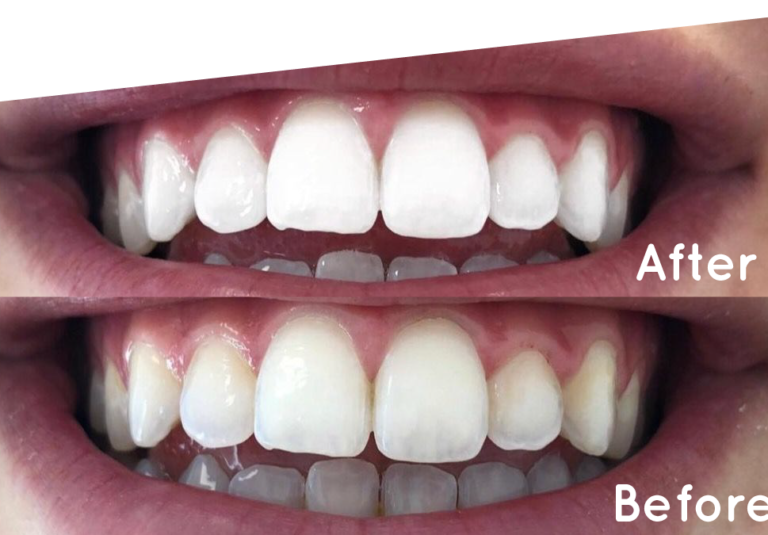Laser teeth whitening is a popular cosmetic procedure that can dramatically brighten your smile. However, its success and safety can be influenced by underlying medical conditions. Certain health issues, both systemic and dental, may affect how your teeth respond to whitening treatment and can even influence whether the procedure is recommended for you.
Understanding these factors helps you make informed decisions and achieve the best possible results with minimal risks.
1. Dental Health Conditions
a. Gum Disease and Oral Infections
Active gum disease (gingivitis or periodontitis) causes inflammation and sensitive gum tissue. Whitening gels contain peroxide, which can irritate inflamed gums, leading to pain or burning sensations during treatment.
- Impact: Increased discomfort and potential uneven whitening due to gum recession exposing tooth roots.
- Recommendation: Treat any gum infections or inflammation before whitening to avoid complications.
b. Tooth Decay and Cavities
Open cavities and decayed teeth can absorb the bleaching agents, which may cause severe sensitivity or damage to the dental pulp (the nerve inside the tooth).
- Impact: Heightened pain and risk of worsening dental problems.
- Recommendation: All cavities and dental issues should be treated before undergoing whitening.
c. Enamel Hypoplasia and Erosion
Conditions causing thin, weak, or defective enamel make teeth more vulnerable to sensitivity and damage from bleaching agents.
- Impact: Whitening may cause discomfort, and results might be uneven or less noticeable.
- Recommendation: Dentists may use lower-concentration gels or alternative whitening methods.
2. Intrinsic Tooth Discoloration Conditions
Some types of discoloration are internal (intrinsic) rather than surface (extrinsic) stains. These include:
a. Tetracycline Staining
Use of tetracycline antibiotics during childhood can cause deep gray or brown tooth discoloration that is resistant to conventional whitening.
- Impact: Laser whitening usually provides minimal improvement.
- Recommendation: Consider veneers or bonding for cosmetic correction.
b. Dental Fluorosis
Excess fluoride intake during enamel formation causes white spots or brown patches on teeth.
- Impact: Whitening may cause uneven color distribution.
- Recommendation: Treatment plans may include combined approaches such as microabrasion and whitening.
3. Systemic Medical Conditions
a. Dry Mouth (Xerostomia)
Dry mouth conditions reduce saliva, which normally protects teeth from acids and helps clear away stains.
- Impact: Increased enamel vulnerability, more sensitivity, and potentially less effective whitening.
- Common causes: Medications, autoimmune disorders (like Sjögren’s syndrome), radiation therapy.
- Recommendation: Use desensitizing agents and possibly opt for gentler whitening alternatives.
b. Autoimmune Disorders
Autoimmune diseases affecting oral tissues, such as lupus or Sjögren’s syndrome, may cause increased gum sensitivity or inflammation.
- Impact: Whitening may exacerbate oral discomfort.
- Recommendation: Treatment under careful supervision with tailored protocols.
4. Medications and Treatments
Some medications or medical treatments can influence oral health and whitening results:
- Chemotherapy or radiation therapy can cause dry mouth and fragile oral tissues.
- Medications like antihistamines, antidepressants, and antihypertensives may lead to dry mouth or increased sensitivity.
- Certain antibiotics might cause intrinsic discoloration if taken during tooth development.
5. Pregnancy and Breastfeeding
Though laser teeth whitening is generally safe for healthy adults, the effects on a developing fetus or infant are not well studied.
- Recommendation: Most dentists advise postponing whitening treatments until after pregnancy and breastfeeding as a precaution.
6. Allergic Reactions and Sensitivities
Some patients may experience allergic reactions or sensitivities to the bleaching agents (hydrogen peroxide or carbamide peroxide).
- Impact: Pain, swelling, or rash in the mouth.
- Recommendation: Allergy testing or use of hypoallergenic whitening alternatives.
How to Ensure Safe and Effective Whitening if You Have Medical Conditions
- Consult your dentist: Disclose your full medical history and medications.
- Complete necessary dental treatments: Address decay, gum disease, or enamel issues first.
- Customized treatment plans: Your dentist may recommend gentler whitening agents, shorter sessions, or alternative cosmetic options.
- Follow pre- and post-care instructions: Use desensitizing toothpaste, avoid staining foods, and maintain excellent oral hygiene.
Summary
Medical conditions can affect both the safety and outcome of laser teeth whitening. The key to a successful and comfortable whitening experience is personalized care that takes your unique health profile into account.
Always consult your dental professional to determine the best whitening plan for you. With the right approach, even patients with medical challenges can achieve a brighter, healthier smile.




